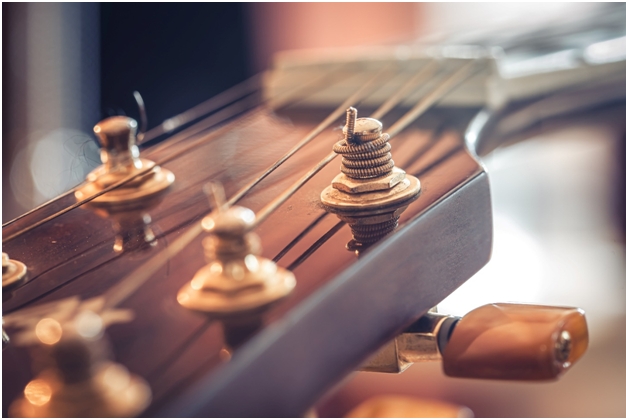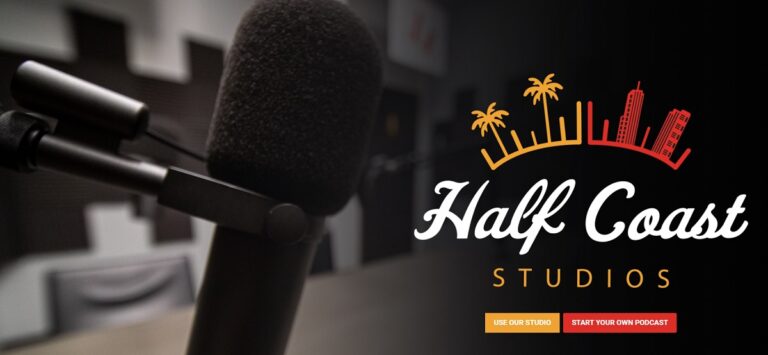In this specific article, you’ll learn the fundamental steps of how to stereo get better at a music. This guide can be applied to any genre of music and can offer you a foundational knowledge of how to approach stereo mastering.
Download free mastering eBook
What’s Stereo Mastering?
Stereo learning is the procedure of taking a single file of your final mix and preparing it for release. The primary process is to adapt the overall loudness of the song and right any tonal balance imperfections. It’s also common to apply additional processing to enhance the sound as much as possible.
What’s Stereo Mastering?
Preparing a Understanding Session
Begin by beginning your DAW (Digital Audio Workstation) and importing the mix into the session. Arranged the BPM of the project to match the mix data file; most DAW’s have a BPM (is better than per minute) meter to recognize this if you don’t know it.
Bunch the plugins you’ll be using on your stereo output. You will find 5 essential plugins for mastering tutorial that needs to be within your mastering string in the following order: Gain, EQ, Compressor, Limiter, Meter.
There are several additional plugins that can help enhance the sound that may be inserted into your chain, for example, a stereo spreader, tape saturation, harmonic distortion, etc. For you to decide to use these additional plugins will be based on the combine itself and the audio you want to achieve.
Mastering Chain
The ultimate step of preparing the session is to guarantee the file has enough headroom. The headroom is the area between your highest peak of the music and 0dBFS (decibels full level). Giving headroom during mixing is a good practice as it continues the dynamics and transients of the audio tracks unimpaired.
Headroom
When understanding, the headroom provides you the overall flexibility to adapt the EQ without potentially pushing the audio tracks too loud into the following plugins. Open up your metering plugin, then preview the loudest portion of the combination and use the gain plugin (the first place on your professional channel) to modify the top of the audio tracks to anywhere between -3dB and -6dB on your peak meter.
Adjust the headroom
Preparing Yourself
Sometimes in the right frame of mind will help you make better understanding decisions. Jumping into tweaking the EQ prematurely without a clear sonic way can end up worsening the audio.
Hearing a song for the very first time is a distinctive experience. If you’re understanding your own track then you won’t have this privilege as you should have heard your song often whilst creating it. If you’re focusing on a music you haven’t listened to before, take the chance to experience and revel in it as a consumer will.
Before you screen the mix again, have a listen to one or two great-sounding guide tracks that contain a comparable genre, instrumentation, and vibe to the mix. The guide tracks should be considered a good representation of your sonic goal because of this last master.
Use reference monitors when mastering a song
Reference plugin free trial
Hearing these references at this stage will give you a good frame of research for just what a great excel at should appear to be before you begin making changes to your grasp processing. Make sure to match the perceived loudness of the guide tracks to the loudness of the combination to make sure the evaluation is fair.
Need for Level Matching
For the next listen, have a more analytical approach and take note of the areas of the track that you are feeling need to change to get the combination sounding similar to your reference tracks. Get yourself a feel for how the low-end sits in the context of the entire combination and the way the balance comes even close to the reference keep track of. Do the same with the mid and high frequencies.
By identifying the key changes you are feeling are needed, you’ve created a sonic vision and a definite target to aim for. This will keep your understanding decisions centered and efficient.
Create A Sonic Goal
Mastering Phase
There are several ways to approach mastering. The way you framework your process will eventually be down to your selected workflow. Utilize the following advice as your basis but feel absolve to tweak the workflow to fit your style. Just make certain that your requirements don’t hinder the quality of the audio or introduce technical issues.
START OUT WITH Loudness
Your metering plugin should offer you a LUFS (loudness items full range) reading. This way of measuring gives a precise depiction of the identified loudness of the sound as it’s established on how the individuals ear activities loudness relative to the occurrence spectrum.
Different distribution mediums have various ‘most effective levels’ for loudness and dBTP (decibels true peak). For instance, streaming websites like Spotify and YouTube stream audio tracks at about -14LUFS integrated, which is about 8 decibels quieter than the loudest produces.
START OUT WITH Loudness
If you submit a loud and heavily compressed song at -6LUFS, Spotify will transform it right down to -14LUFS, however the damage done by over-limiting is irreversible. It might be advisable to create a less-loud-more-dynamic expert that didn’t need to be turned down a lot and avoid the issues launched by over-limiting.
Active Is Punchier When Streamed
A true-peak meter displays the peak of the audios indication after the digital sound has been changed into an analog sign that may be heard through audio system. That is more appropriate and relevant in real-world use than the meters that you observe on your DAW mixer which shows the reading of the digital sample optimum. Often the test maximum is more ‘forgiving’ and your music ends up clipping in real conditions when listened to through audio speakers. So it’s advisable to have a true maximum meter to check on this.
Use A True Peak Meter IN ORDER TO AVOID Clipping
Regardless of the medium by which your audience will hear your music, focusing on how to control loudness and true-peak will empower you when understanding audio.
Start by beginning your metering plugin and your limiter. Set the limiter outcome to -1.0dB to provide your professional some headroom. This will help minimize true peaks and also accommodate any future conversion to lossy forms such as Ogg Vorbis and Mp3.
Monitor the loudest portion of your keep tabs on and improve the limiter gain until your LUFS short-term reading is reaching your target. That is a reasonably quick and abrasive setting and you can tweak it later.
Place The Loudness
Levels trial offer
Arranging the loudness before making every other changes to the sound has lots of benefits. It can help highlight existing issues with the tonal balance, it’s much easier to level match to your recommendations, and you reduce the threat of EQing your get better at in a way that is incompatible with your loudness concentrate on.
EQ
When you paid attention to the research songs, you established the tonal balance direction you want to take for the melody. So when you open your EQ you struck the ground jogging and can make the first few changes very efficiently.
When adjusting the EQ, loop the section of the songs that ranges the widest selection of frequencies, often the drop/chorus. In the event that you work on the verse (where in fact the drums might be quieter or the bass is probably not present) you may overcompensate and raise the low-end too much.
Use Reference Paths TO STEER Your EQ Decisions
Keep referring back again to your reference paths when adjusting the EQ to help you established the perfect supercharge or attenuation amount. Understanding should be contacted with detail. Each EQ adjustment will have a nice spot that you may miss if you’re 1dB off.
For instance, the low-frequency range is tricky to get perfect. Too much of an improvement in the low-end and the get good at will sound muddy and absence clarity. An excessive amount of attenuation of the low-end and the expert will sound weak and thin. When you are feeling you have a great establishing, try sweeping through a variety of around ±1dB and Q bandwidth to see if there’s a detailed setting that looks more musical.
Fine Tune The Low End
Bassroom learning EQ plugin
Generally speaking, you would want to go for broad Q bandwidths and EQ adjustments no higher than around 3dB. In case the alterations are greater than this you might get more translucent results by changing specific elements in the initial mix before understanding.
Rules can continually be broken and it’s the results that count up. If a master will need a 6dB high-end boost to audio great then do it now.
When making EQ adjustments, make certain to change the output gain of the EQ to match the output loudness to the insight loudness. This can help you objectively decide whether your EQ decisions are bettering or deteriorating your sound when you bypass the plugin.
Compression
(Note: Just click here if you’re unsure about different parameters in just a compressor and exactly how they affect music).
The compressor will certainly reduce the volume of the audio tracks that surpasses the threshold. During mastering, compression can be used subtly to control the dynamics, add color, and thicken up tones.
As with setting the loudness and EQ, monitor the loudest portion of your keep track of when environment the compressor. In the event that you placed the threshold predicated on the quantity of the verse, the louder chorus would thrust the compressor to work too much offering an unnatural audio.
Over-compression can be an incredibly fast way to wreck a combination. Squashing the transients can suck the dynamics and sentiment out of any track and decrease the impact of your drop or chorus. In order to avoid this, dial in a minimal proportion of around 1.2:one to two 2:1 and a high threshold that provides only 2 or 3dB of gain lowering.
Threshold And Percentage Explanation
By only tickling the transmission in this manner, the compression will be transparent and subtle. It’ll keep up with the impact of the powerful variation between your parts of your music. It will also help glue the does sound of your combination together, giving them a cohesive sound.
Once your threshold and proportion are working well with your audio, you can tweak the attack and release settings to help the compressor further supplement your audio.
Invasion & Release
If your attack is too fast, it will damage the sound of the transients of your audio, including the drums or first few milliseconds of an bass. It’s important to protect these transients to keep an open and powerful sounding professional. Conversely, if your assault is too slow, the compressor won’t react with time to the louder elements of the audio that you would like to reduce.
A great starting place for the harm of your compressor is around 25-50 milliseconds. This leaves enough room for the short-sharp transients to poke through the blend without being so long that the compressor doest behave in time. You could tweak out of this starting point and use your ears and guide monitors to help you dial in a placing that is effective with your music.
The compressor release is equally important. If it’s too brief, it can create a pumping audio where the audio feels as though it’s jumping within an unnatural way. If it’s too long, the compressor will maintain a constant talk about of gain lowering which, again, will audio unnatural.
Adjust the discharge so that the compressor earnings back again to a zero status (no gain reduction) just before another beat for a transparent and musical compressor setting. In case your compressor has a VU meter or any other aesthetic, you should start to see the gain lowering dancing in time with the music.
Mastering Compressor STARTING PLACE
As your final check of the compressor options, preview the way the professional flows from the verse in to the chorus and ensure it still has an optimistic dynamic impact. In the event the compressor clamps down too hard on that first combat of the chorus then you may need to boost the threshold to reduce the compression.
Extra Processing
At this time, you’ve place the hard loudness, EQed and compressed your professional, so that it should be well on it’s way to sounding how you envisioned. To bring out the maximum potential in the audio, you might add some additional processing to enhance the flavour, vibe, and identity of the music.
Stereo system adjustments during learning can help start the acoustics whilst adding quality and definition to the track. Reducing the width of 0-250Hz so it’s mono can help anchor the foundation of the monitor, reduce period issues, and make it translate better on all playback systems. Increasing the width of the bigger frequencies can increase the definition.
Over-boosting the entire stereo width of a combination can result in period issues so be sure to open your metering plugin and monitor your stage correlation meter. In case the relationship meter begins moving too far from +1 you will be adding audible issues. Again, refer back again to your guide tracks to try and get a similar amount of width.
Extra Processing
Tape emulation and harmonic distortion plugins may be used to add subtle friendliness and remove the ‘digital edge’ of music. They do that with the addition of additional harmonic content presenting a richer and denser sonic persona. This can also hype the sense of energy in the master.
Harmonic Distortion
ANIMATE transient plugin
Much like most mastering techniques, the main element with tape and harmonic distortion is to keep it subtle. Dial-in the effect so you can nearly hear the effect, then slightly spin it back again for a great starting place.
The set of possibilities here’s endless. A couple of plugins that will help you reduce harshness, control your low-frequencies, boost the perceived loudness, add more punch, and more. Experiment and discover which tools help you to get the sound you’re after.
Revisit Loudness
With all the current EQ, compression, and further handling changes you’ve made, it’s possible that the loudness and true-peak will have shifted from what you at first set. Start your limiter and metering plugin and adapt where needed.
Last Listen and Quality Control
That’s where you have a step back and appearance at the complete picture. Pay attention from commence to finish and find out if there are any areas of the professional that you are feeling need a last tweak.
Aswell as comparing the master to your reference paths, it’s also advisable to observe how it sounds against the initial mix. Your merge will be much quieter than your get good at so you’ll need to level match for a good comparison.








